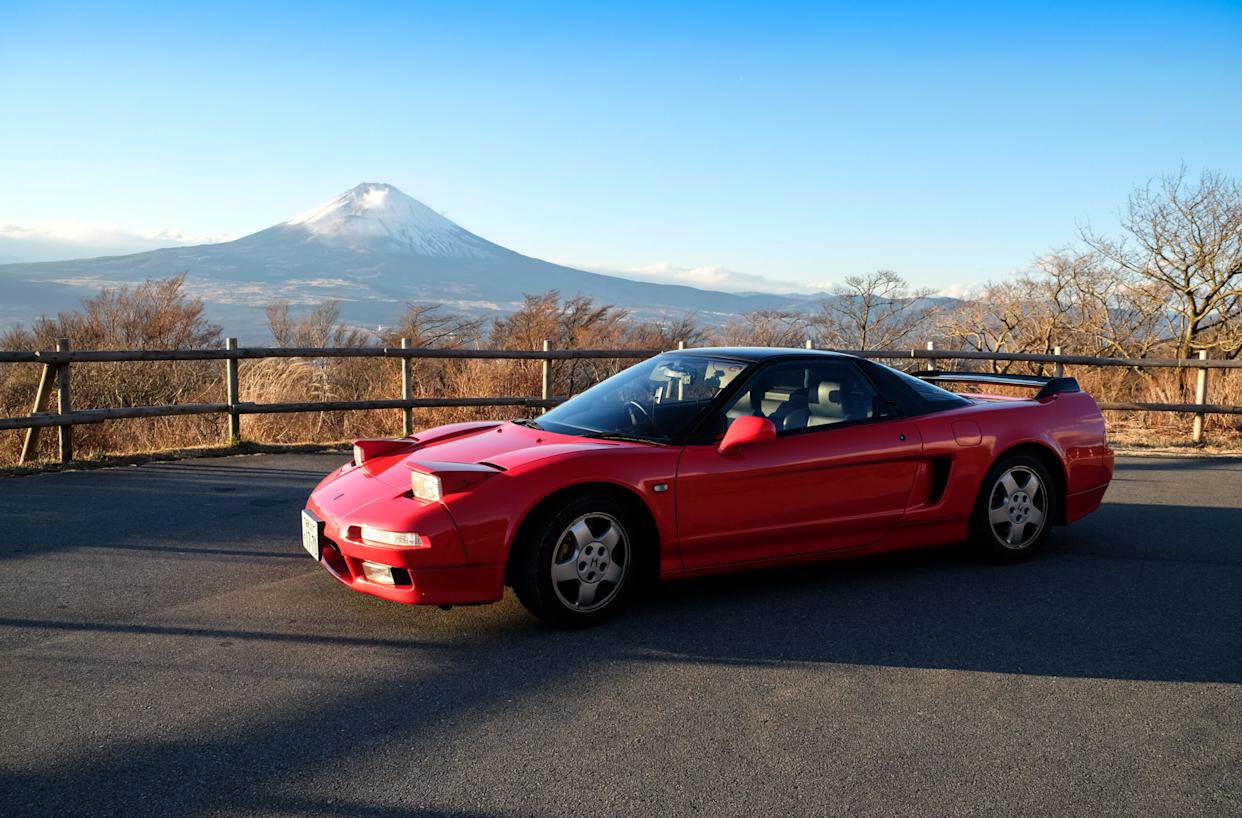
The 1990s were a strange time. We were still pretending Beanie Babies would pay our way through college, and boy bands were still making us cry. But it was also the last great decade for drivers who loved the feel of a manual gearbox, back when cars actually trusted you to shift for yourself instead of treating you like a toddler with a Fisher-Price steering wheel. These cars created moments that still live in muscle memory: perfect heel-toe downshifts that felt like choreography and a sense of total mechanical connection that modern CVTs have all but erased in the name of smoothness and fuel economy.
Each one offered a clear voice, a physical rhythm, and an eagerness to be driven hard. Driving became an act of expression, and these 12 manual cars brought that expression to life with every shift, unlike today's cars that express themselves mainly through software updates and subscription services.
A Transmission of Thought
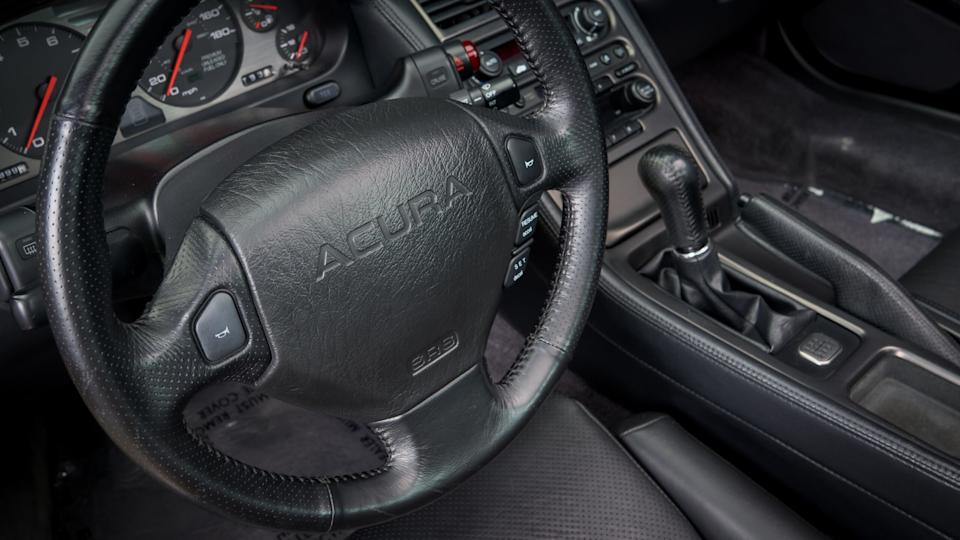
The team here at Guessing Headlights has extensive experience driving, including manual transmissions. Most of us own (or want to own) a car from the 1990s. This may seem like an excellent thing for compiling this list, but it made it quite tricky since there are so many manual cars from the 1990s that are worth driving. We decided to put a limit of 12, allowing each of us to select our top three cars to give you the best-of-the-best.
To put this list together, the focus stayed firmly on the experience behind the wheel, you know, that ancient concept where the driver mattered. Each car featured here came from a place of hands-on joy, where the gearshift served as more than just a relic from a bygone era. It served as a direct neural link between driver and machine, back when manufacturers believed humans were capable of more complex tasks than tapping a touchscreen.
The 1990s offered many great manuals, but these twelve stood out for the way they connected engine to soul, clutch to corner, and pedal to pavement, without needing an AI assistant to hold your hand through every gear change.
Selection leaned toward models that placed the manual transmission at the heart of their identity. Performance mattered, of course, but so did personality; something that died around the same time manufacturers decided paddle shifters were "sportier" than actual involvement.
A short, satisfying gear throw that snicked into place like a bolt-action rifle. A responsive clutch that gave feedback instead of the mushy nothingness of modern clutch-by-wire systems. A powerband that welcomed input from the driver rather than second-guessing every decision. These were qualities that mattered more than raw horsepower or how fast you could update your infotainment system.
Acura NSX
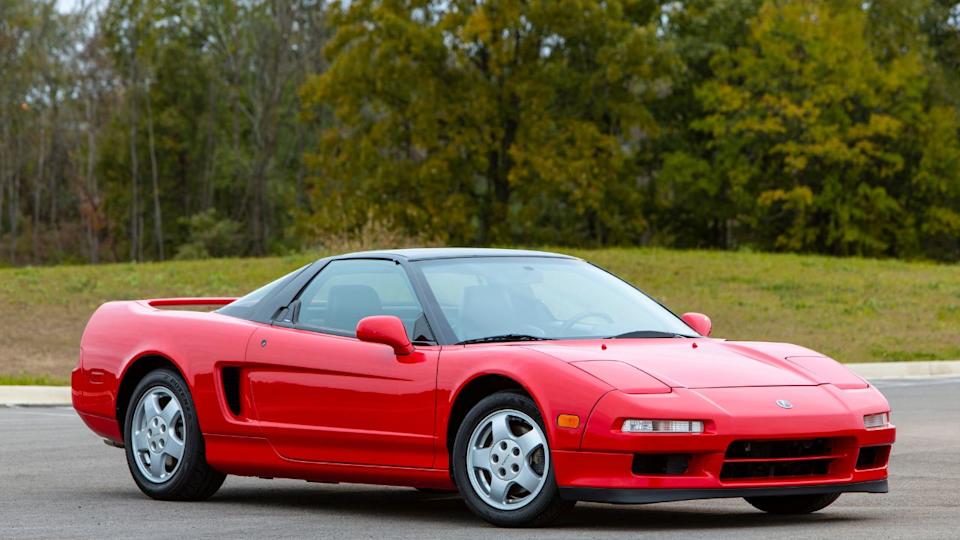
The Acura NSX introduced precision and balance in a beautifully engineered package that made Ferrari engineers cry into their espresso. Honda's mid-engine masterpiece came with a 3.0-liter VTEC V6 producing 270 hp and a five-speed manual that felt like it was carved from a single piece of titanium by Japanese sword masters.
The shifter delivered each gear change with throws so short and precise they made Swiss watchmakers jealous. The cable-operated mechanism provided direct, mechanical feedback — a revolutionary concept. The clutch operated with the perfect balance of effort and travel, engaging with a consistency that put most relationships to shame.
Here's the kicker: Honda's engineers obsessed over every detail. The shift knob's weight, the gate spacing, even the leather on the boot – all calculated to create the perfect tactile experience. The result was a gearbox that made you want to shift just for the heck of it, even when stuck in traffic behind some soccer mom in a Suburban checking her makeup.
The chassis provided outstanding feedback through every corner, while the aluminum construction kept weight down to 3,010 pounds — roughly what a modern Civic weighs after it's been on a diet. Every input felt immediate and honest, creating an experience that modern supercars with their computerized everything can only dream of replicating.
Mazda RX-7 (FD)
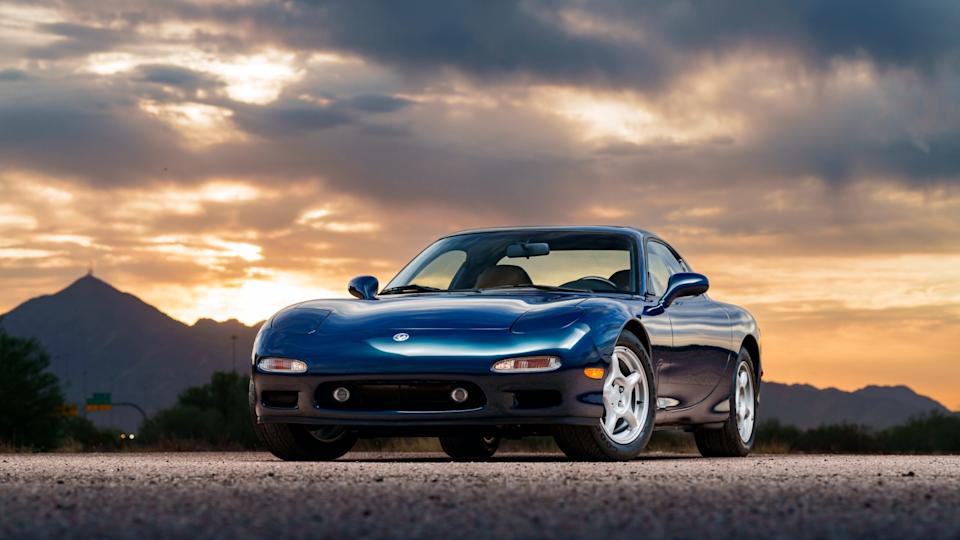
The third-generation RX-7 gave enthusiasts a rotary-powered spaceship and a five-speed manual that could handle the 13B-REW's 255 horsepower, or 400-plus horsepower after your inevitable modifications, because stock power is for quitters. Mazda's engineers somehow made a transmission that perfectly complemented the rotary's unique powerband, smooth as silk at low revs and demonic past 4,000 rpm.
The gearbox featured a short-throw shifter that moved with surgical precision. Each gate was perfectly defined, and the synchros were strong enough to handle your ham-fisted downshifts when you were trying to impress that girl who definitely was not impressed. The clutch operated with a light pedal effort that would not tire you out during spirited canyon runs, which was good because you would be doing a lot of those.
Here is where it gets interesting. The sequential twin-turbo setup meant the power delivery changed dramatically depending on which gear you were in. First and second were all about building boost, third and fourth were where the magic happened, and fifth was for stretching its legs on the highway or running from the consequences of your actions.
The shifter placement was perfect, close enough for quick shifts but not so close that you would accidentally grab it instead of the handbrake during your inevitable parking lot shenanigans. And let's be honest, if you owned an FD and didn't try at least one donut, you were doing it wrong.
BMW M3 (E36)
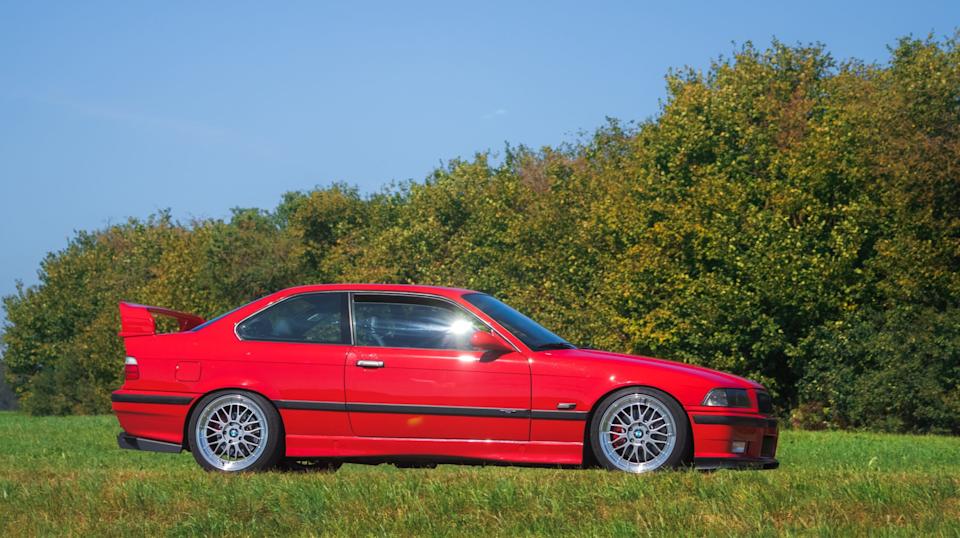
The E36 M3 delivered the naturally aspirated symphony that makes modern turbo fours sound like angry vacuums. The S50/S52 inline-six produced between 240-321 hp (depending on market and year) and revved to 7,000 rpm with the eagerness of your buddy at the all-you-can-eat buffet (me, I'm the buddy).
BMW's five-speed Getrag transmission was built like a German bank vault — overengineered, precise, and completely humorless about its job. The throws were medium length but perfectly weighted, with a satisfying mechanical resistance that let you know each gear was properly home. The clutch engagement was progressive and predictable, which was crucial because the M3's rear-wheel-drive setup would bite you faster than a hangry Chihuahua if you got sloppy with your inputs.
The genius was in the details: the shift pattern was etched right into the knob (because apparently BMW thought their customers might forget), the gates were spaced perfectly for quick heel-toe work, and the whole assembly felt like it could survive a nuclear holocaust. Which it probably could — this is German engineering we're talking about.
The powerband was linear and progressive, meaning you could ride any gear hard without worrying about sudden turbo lag or VTEC kicking in at inopportune moments. It was the kind of predictable excellence that made the M3 the benchmark for sports sedans, right up until BMW decided turbos and automatic transmissions were more "efficient.
Toyota MR2 Turbo (SW20)

The SW20 MR2 Turbo was Toyota's response to the Porsche tax: all the mid-engine thrills at half the price and twice the reliability. The 3S-GTE turbocharged four-cylinder pumped out 200 hp, which doesn't sound like much until you remember this thing weighed less than 3,000 pounds and had its engine mounted right behind your kidneys.
The five-speed manual was a gem of Japanese precision engineering. Short, crisp throws that snicked into each gate with mechanical authority. The clutch was perfectly matched to the turbo powerband – progressive enough to launch cleanly but grabby enough to handle full-boost shifts. And trust me, you'd be doing a lot of full-boost shifts because the turbo lag was real, and working around it became an art form.
Here's the fun part: the mid-engine layout meant the shifter was mounted directly to the transmission, no cables or linkages to muck up the works. This created a direct, mechanical connection that let you feel exactly what the gearbox was doing. Every synchro mesh, every gate engagement: it was all right there in your palm.
The driving position puts you in perfect harmony with the controls. The shifter fell naturally into hand, the clutch pedal had just the right amount of travel, and the whole experience felt like piloting a fighter jet designed by people who actually cared about the pilot's experience.
Subaru Impreza WRX STI Type R (GC8)
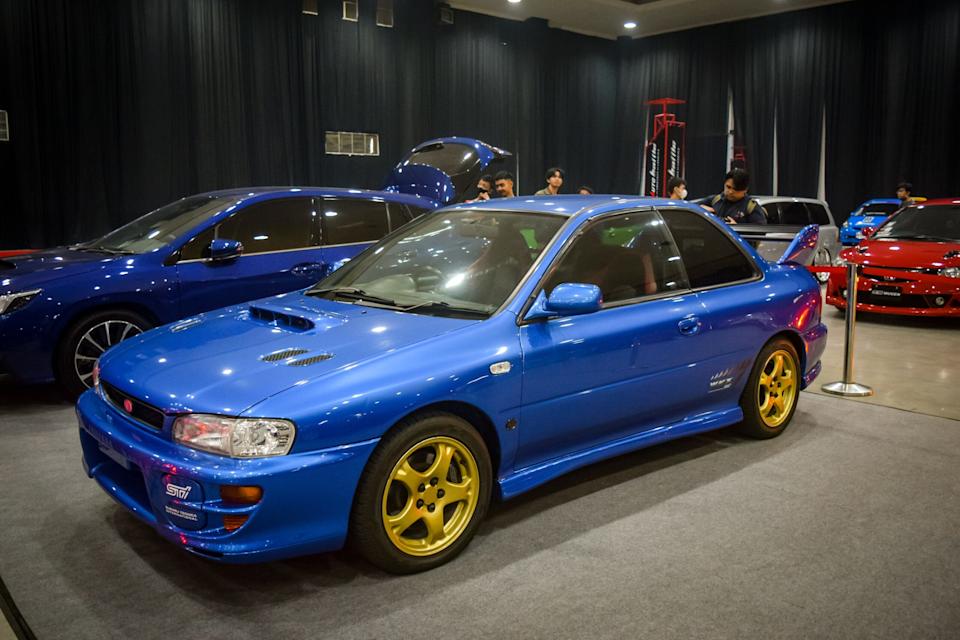
The GC8 STI was rally racing distilled into street-legal form, and it arrived with a five-speed manual transmission that could take severe abuse. Built for the Japanese market only, the STI Type R was lighter, stiffer, and more focused than its WRX sibling, designed with motorsport in mind.
Under the hood was the turbocharged EJ20-series flat-four, producing up to 280 PS (about 276 hp) in JDM trim thanks to Japan’s self-imposed "gentlemen’s agreement" on horsepower. But it wasn’t just about numbers. The engine delivered power with the urgency of a caffeinated kangaroo, backed by a broad torque curve and minimal turbo lag.
Subaru’s five-speed gearbox was known for its strength, especially in the STI Type R models, which featured upgraded internals over the base WRX. The throws were short and mechanical, the shifter moved through its gates with satisfying precision, and the clutch was light enough for daily use but durable enough for repeated hard launches.
The real magic came from how seamlessly the transmission worked with Subaru’s symmetrical all-wheel-drive system. Drop the clutch at 4,000 rpm, and the car would rocket forward with zero wheelspin, clawing at the road with all four tires. The gear ratios were tightly spaced to keep the turbo on boil, encouraging you to row through the gears often. That is precisely how it should be in a proper driver’s car.
And that shifter feel? Direct, mechanical, and utterly confidence-inspiring. You always knew exactly where you were in the gate, and the synchros could handle your most aggressive heel-toe attempts without complaint. This was a transmission built by people who understood that rally drivers do not have time for subtlety. They need precision, durability, and speed.
Ford Mustang GT
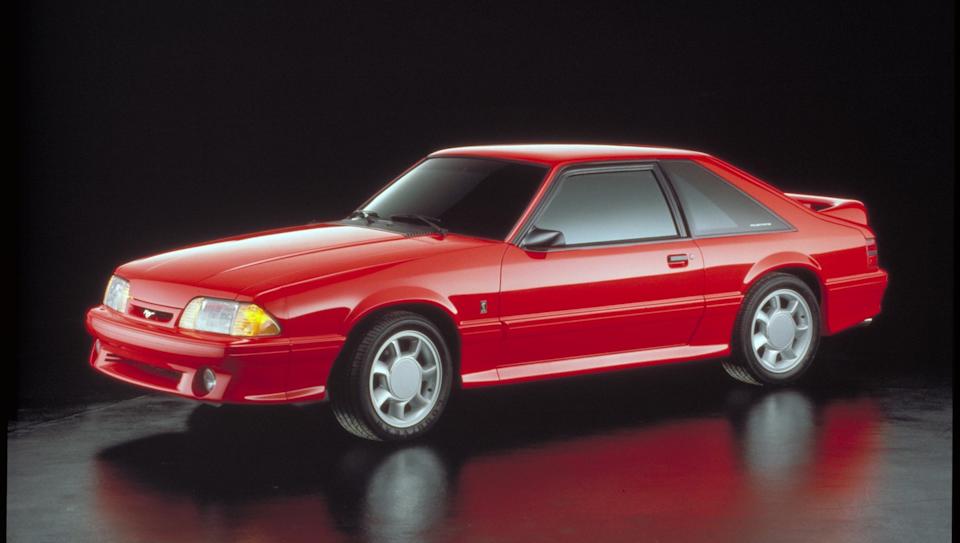
The Fox-body Mustang GT brought American muscle-inspired aggression to the manual transmission party with all the subtlety of a freight train. The 5.0-liter Windsor V8 pumped out 225 hp and enough torque to twist the car's chassis into a pretzel if you weren't careful. Paired with the infamous T-5 five-speed, it was a combination that separated the wheat from the chaff.
Now, let's be honest: the T-5 wasn't winning any precision awards. The throws were long, the gates were vague, and the synchros were about as robust as tissue paper in a rainstorm. But here's the thing: none of that mattered when you had 300 lb-ft of torque hitting at 3,000 rpm. You weren't shifting this thing to show off your heel-toe technique; you were shifting it to harness a barely-contained explosion.
The clutch was incredibly heavy. Your left leg would be screaming after a few hours of city driving. But that hefty pedal pressure gave you confidence that the clutch could handle whatever abuse you dished out, at least until you inevitably cooked it trying to launch at the drag strip.
The beauty was in the brutality. This wasn't a precision instrument; it was a club. And sometimes, what you need is a club. The V8 rumble, the long throws, the heavy clutch; it all combined to create an experience that was pure American theater. Refined? Heck no. Fun? Absolutely.
Volkswagen GTI VR6

The MK3 GTI VR6 introduced a narrow-angle V6 that sounded like angels playing Beethoven while someone revved a motorcycle in the background. The 2.8-liter VR6 produced 178 hp, which was plenty when wrapped in German engineering that gave a dang about the driving experience.
Volkswagen's five-speed manual was a masterclass in tactile feedback. The throws were perfectly weighted — not too short to feel nervous, not too long to feel sloppy. Each gate had a distinct, mechanical click that let you know the gear was properly engaged. The clutch operated with Germanic precision, progressive and predictable in its engagement.
But the real magic was how the gearbox complemented the VR6's character. The engine produced a flat torque curve that made every gear usable, so you weren't constantly hunting for the right ratio. You could lug it in sixth or scream it in second, and it would pull cleanly either way. This was the kind of flexibility that made the GTI a brilliant daily driver that could still embarrass sports cars when the mood struck.
The shifter placement was spot-on, falling naturally to your right hand whether you were cruising on the highway or attacking a back road. And that VR6 sound, deep, growling, and completely addictive, made you want to work through the gears to hear the engine sing. It was the thinking enthusiast's hot hatch, built when VW still cared about things like soul and character.
Nissan 300ZX Twin Turbo (Z32)
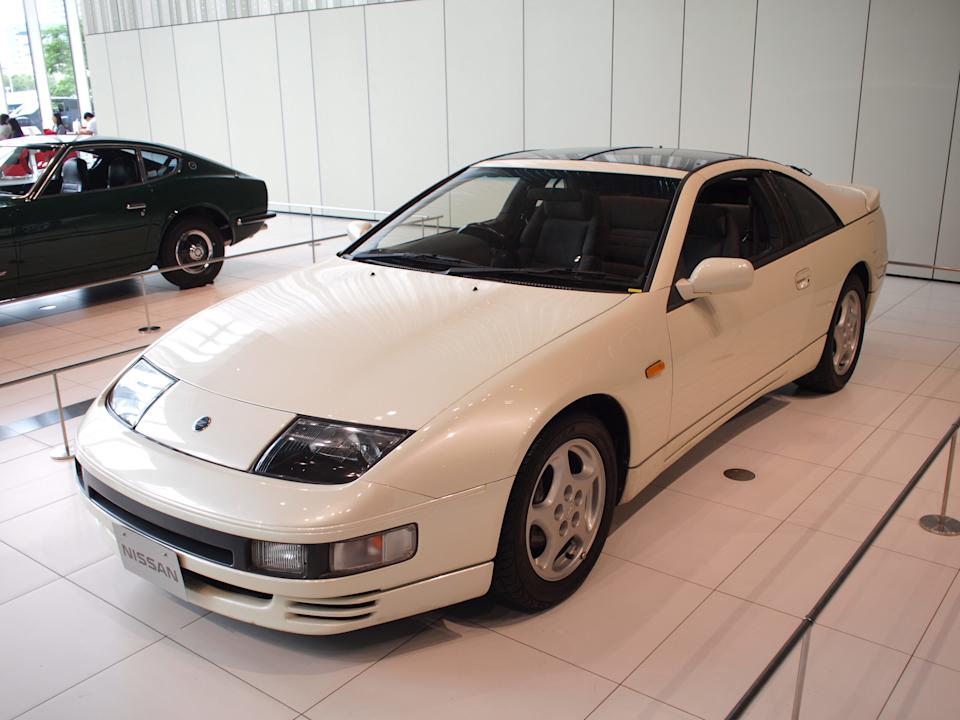
The Z32 300ZX Twin Turbo was Nissan's technological tour de force, packed with more advanced engineering than a space shuttle and a manual transmission that could handle the VG30DETT's 300 hp without breaking a sweat. This was Japanese engineering at its peak – complex, sophisticated, and utterly brilliant when it worked.
The five-speed manual was built like a Swiss watch. Short, precise throws with mechanical feedback that let you know exactly what was happening inside the case. The synchros were strong enough to handle aggressive downshifts, and the clutch operated with the kind of progressive engagement that made smooth launches look easy (even if they weren't).
To make it all come together, the twin-turbo setup meant the power delivery was all about managing boost and lag. The gearbox became your primary tool for keeping the turbos on song, and the ratios were spaced perfectly for this task. You learned to anticipate the boost, to time your shifts to keep the turbos spinning, to use every gear as part of a complex dance between man and machine.
The shifter itself was a work of art: perfectly weighted, with a leather boot and knob that felt expensive in your hand. The whole assembly radiated quality, from the machined aluminum gate to the precise spring-loading that guided each shift home. It was the kind of transmission that made you appreciate the engineering that went into every component.
Toyota Supra Turbo (A80)
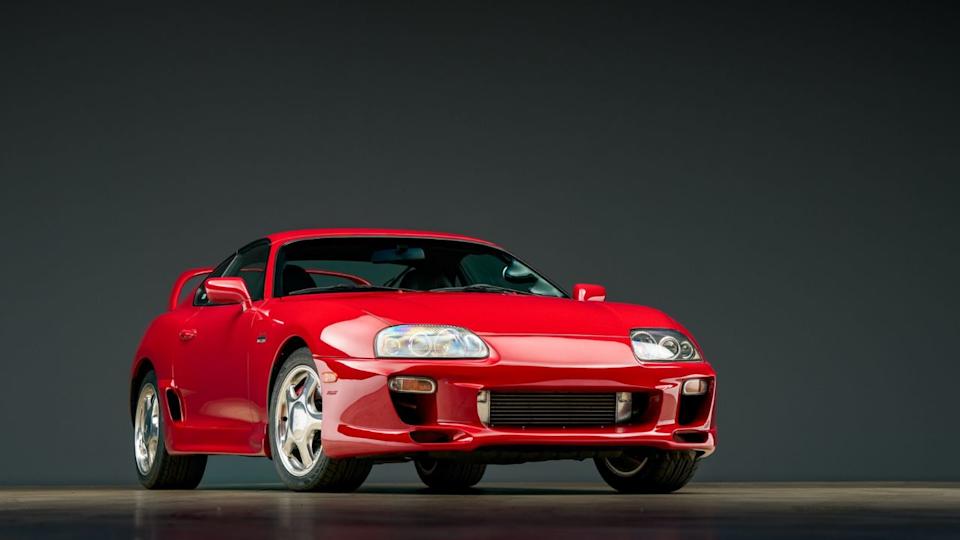
The A80 Supra Turbo arrived with the legendary 2JZ-GTE and a Getrag six-speed manual that could handle whatever the internet threw at it. And trust me, the internet threw everything at it — 500 hp, 700 hp, 1000 hp builds that would make physicists weep. The V160 six-speed just kept asking for more.
This transmission was overbuilt in the best possible way. The throws were substantial and mechanical, with a shifter that moved through its gates like it was machined from solid steel. The clutch was progressive and strong, designed to handle the 2JZ's considerable torque output without drama. Each shift had weight and authority that made you feel connected to the drivetrain in a way that modern automatics simply can't replicate.
The gear ratios were spread wide to accommodate the 2JZ's broad powerband. First gear would launch you like a rocket, second and third were where the turbo really came alive, and the higher gears let you explore the engine's incredible top-end pull. This was a transmission built for both street cruising and serious performance, equally at home in traffic or at 150 mph.
But here's the real magic: the V160 became legendary not just for its strength, but for how it felt. Every shift was an event, every gear change a deliberate act of mechanical communion. Modern automatics might be faster, but they'll never replicate the satisfaction of a perfectly executed shift in a Supra six-speed.
Mitsubishi Eclipse GSX
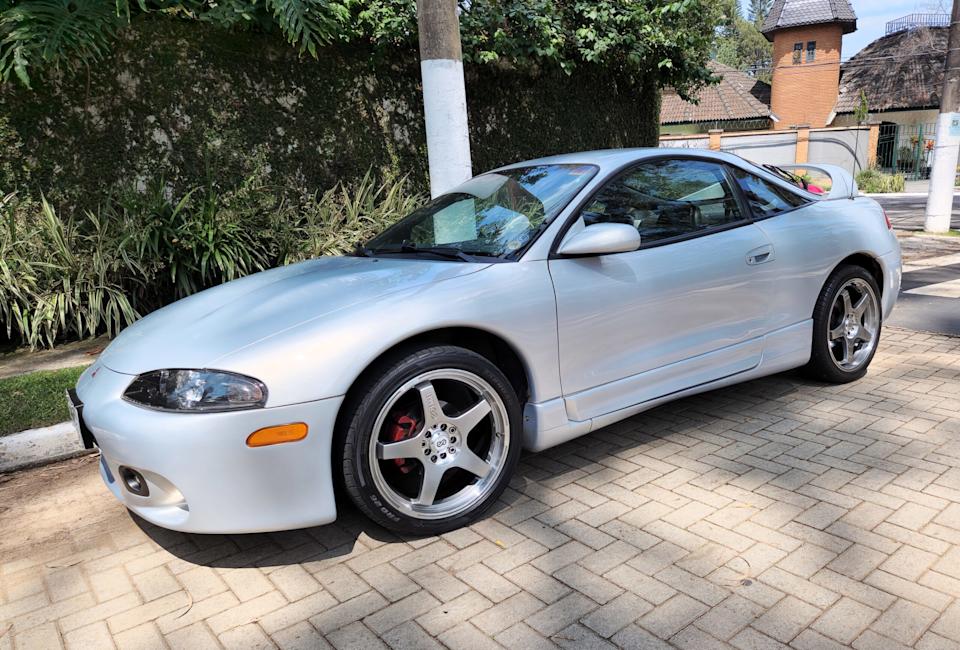
The second-generation Eclipse GSX brought turbocharged all-wheel-drive performance to the masses with a five-speed manual that perfectly complemented the 4G63's manic personality. This was Mitsubishi's sports car moment, before they decided crossovers were more profitable than dreams.
The transmission was typically robust Japanese engineering: short throws, crisp gate definition, and synchros that could handle your most aggressive driving. The clutch was surprisingly light for an AWD turbo car, but don't mistake light for fragile. This thing was built to handle the 4G63's considerable torque output, especially once you inevitably started modifying it.
The magic was in how the gearbox worked with the all-wheel-drive system. You could drop the clutch and let the AWD system sort out the traction, making it nearly impossible to bog down or spin the wheels. This gave you the confidence to really work the transmission, knowing the car would put the power down regardless of conditions.
The shifter placement was spot-on for the Eclipse's cockpit-like interior. Everything fell naturally into place, from the perfectly positioned shift knob to the clutch pedal that had just the right amount of travel. It was the kind of ergonomic excellence that made long driving sessions a pleasure rather than a chore.
Chevrolet Camaro Z28
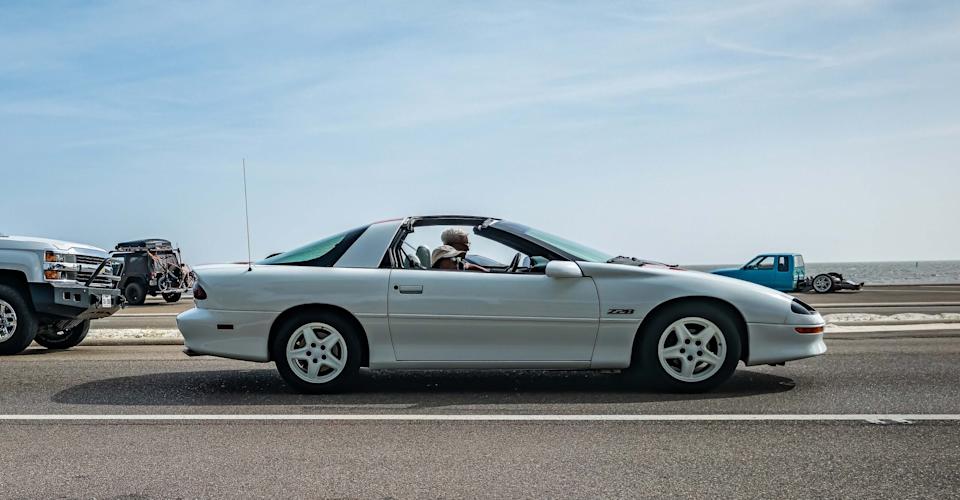
The fourth-generation Camaro Z28 brought the LT1 350 and a six-speed manual to the muscle car party, creating a combination that was both more sophisticated and more brutal than its predecessors. The 275 hp LT1 was a proper small-block with modern fuel injection, and the T56 six-speed was strong enough to handle whatever you threw at it.
The T56 was a revelation after years of fragile T-5s. The throws were shorter and more precise, the gates were better defined, and the synchros could actually handle aggressive downshifts without throwing a tantrum. The clutch was heavy – this is American muscle, after all – but it engaged with the kind of authority that inspired confidence.
The gear ratios were spread wide to make the most of the LT1's broad powerband. You could lug it in sixth gear or scream it in first, and the engine would pull cleanly either way. This was the kind of flexibility that made the Z28 equally happy cruising the highway or terrorizing back roads.
But the real appeal was the theater of it all. The heavy clutch, the mechanical shifter, the rumbling V8. It all combined to create an experience that was pure American muscle. It wasn't subtle, but it was beyond memorable. This was a transmission that made you work for your performance, and somehow that made the rewards even sweeter.
Last Gear, Best Gear
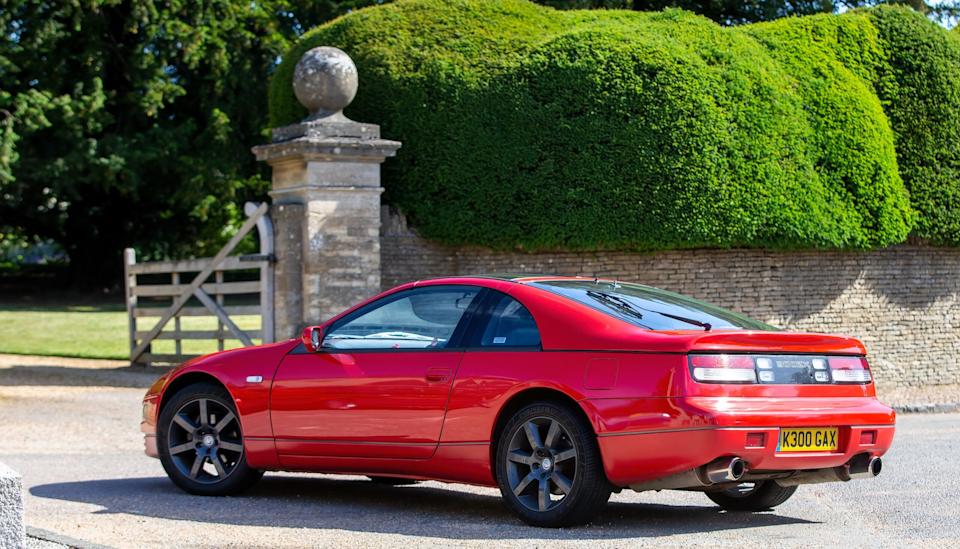
Driving in the 1990s came with a kind of magic that lived in the space between your hand and the shift knob, back when cars treated you like a partner rather than a passenger. These machines didn't whisper suggestions through seventeen different drive modes; they spoke directly through steel, oil, and mechanical honesty. Every turn of the key promised a session of pure analog conversation, and each manual transmission told its own story through feel, feedback, and rhythm.
Today's roads may carry more screens than a Best Buy showroom, but the memory of a perfect heel-toe downshift never fades. These machines delivered an experience that drivers still dream about because they demanded your participation in the driving experience.
With a manual car, every mile meant engagement. Every shift was a choice you made, not an algorithm. Every drive was a collaboration between human and machine, built on trust, skill, and the understanding that the best things in life require effort.
As we close the chapter on the manual age, the legacy of these '90s icons keeps shifting forward: one perfectly timed, beautifully mechanical gear change at a time. Somewhere out there, in a garage or on a back road, someone is discovering what we've lost, rowing through the gears of one of these legends and remembering what driving used to feel like.
Now, if you'll excuse me, I need to go cry into my CVT.

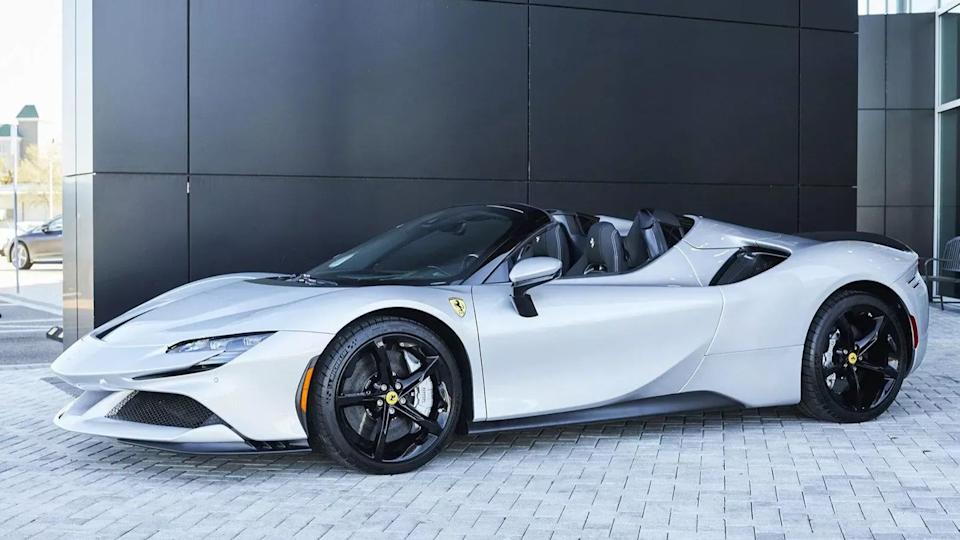

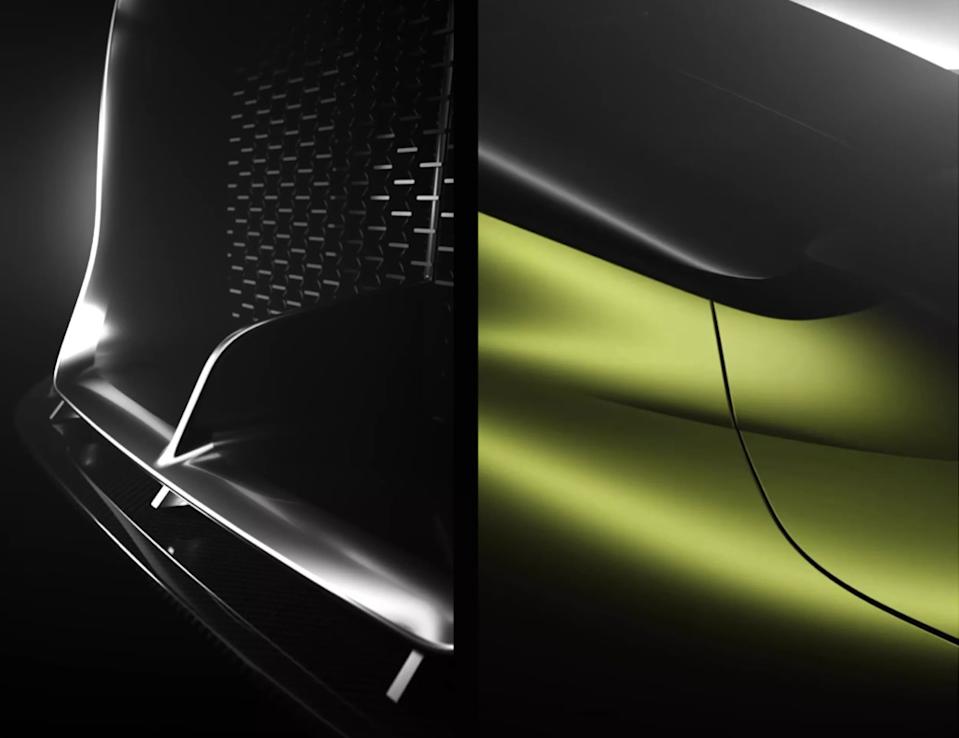
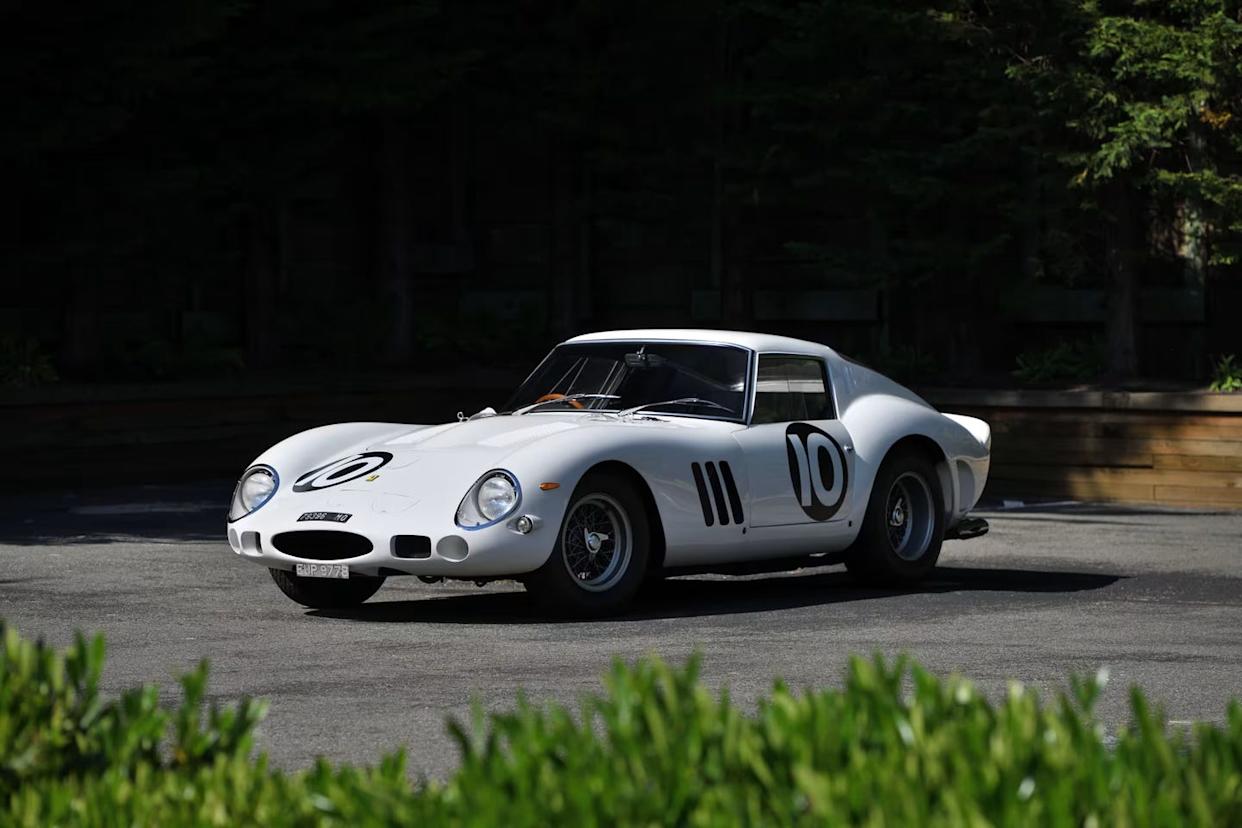



Comments